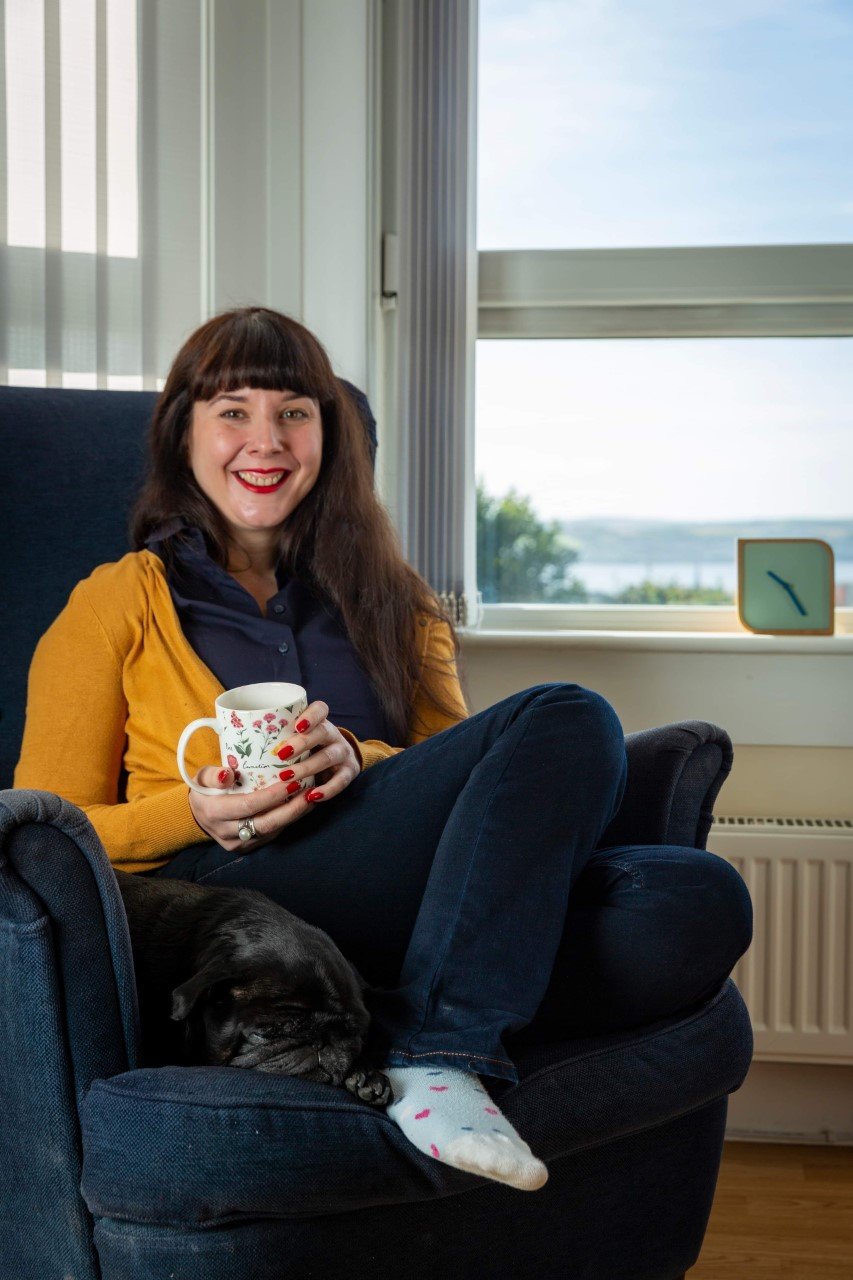Voices: On somatic self-care with counsellor Caroline Georgiou
Adil Iqbal, Remembering Together's storytelling associate, chatted with Caroline Georgiou. We discuss the importance of conscious embodiment through movement and our body play a vital role towards healing and mental well-being. In addition, our conversation explores Somatic care's transformative impact on individuals and communities processing trauma and grief.
Caroline Georgiou
Dundee-based Caroline Georgiou has been working with our artists and communities in Dundee on Remembering Together. Caroline recently started her practice in Somatic Counselling and is driven by supporting people to come into their personal and collective power. She mentions that the word 'somatic' comes from the term soma (living body) recognising that the body has consciousness. The body stores all the experiences we have not been able to process, digest, and let go of. These can be illnesses, aches and pains, and depression. So the body is at the forefront of the somatic movement. Caroline aims to support people in the space of expansion; the process is reciprocity; the engagement of healing becomes mutual, and transformation is essential for the inner awakening of who we truly are.
Caroline talks about how somatic healing nourishes our resilience by allowing us to pay attention to what we need; for example, the trauma of forcefully being disconnected during the lockdowns, the inability to meet loved ones and restrictions on going outside due to fear and anxiety. We can stay grounded, solid, and connected by living in crisis and difficult circumstances.
'Care and curiosity as a way to heal, inform and understand oneself ' Caroline Georgiou.
She shares valuable insight into how there can be levels of oppression, marginalisation and disenfranchisement in every body, mainly through the layers of power, class, poverty, racism and sexism. However, there are some bodies which experience much more than others. She suggests being mindful of how these layers of oppression impact our everyday lives, finding ways to embrace these emotions and allowing them to feel through bodily movement so that the body can find freedom.
Particularly with healing, where there is trauma, there is a lack of curiosity. As humans, we tend to shut things away and busy ourselves so we cannot feel. We numb ourselves. There is a loss of playfulness and curiosity. She shares an example of the power of somatic healing through community practice: the group comes together to create space for the body to move collectively, a fundamental shift in consciousness occurs through the course. Instead of us moving our body, our body moves us. The process is where the healing takes place. In her own experience of her own body, Caroline sheds light on the central role of vulnerability and how she constantly negotiates how much of herself she puts out there.
'Start listening to what matters most, listen to your heart and belly, start with what comes with ease and connect your community’. Caroline Georgiou
Additionally, Caroline mentioned the importance of presence with her participants, where co-creation as a method allowed her to bear witness, experience, and heal alongside groups of people who she would never get a chance to connect with. We live in times where global consciousness is taking shape, and we are experiencing a crucial shift in the culture of how people want more spaciousness and slower and more intentional lives.
Remembering Together invites people and communities to come together, as healing cannot happen alone. An essential element of the programme is supporting people in processing grief. Through somatic practice, it allows people to self-heal; as humans, our capacity to heal is extraordinary. In addition, somatic can help people to increase their tolerance for the sensation of their emotions and build their capacity and resilience so that the flow of grief can move through them.
Below are a few resources that give further insight into embodied practice:
Numerous publications and research by academics such as Dr Gabor Mate explore the body's central role in the healing process. Trauma release exercise through the psoas muscle shows how our body holds onto trauma. For Black and poc womxn and non-binary people of colour, Glasgow-based Body Remedy, initiated by Mele Broomes, supports physical practice for self-recovery.

